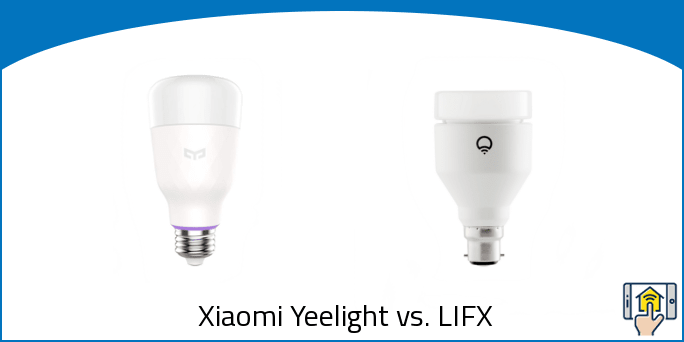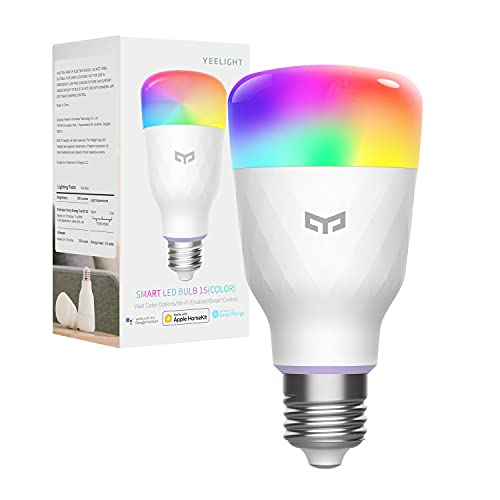LIFX makes some of the most impressive and fun bulbs on the market, but Xiaomi provides a competitive product as well. When comparing the Xiaomi Yeelight vs. LIFX, we feel that the Yeelight offers a more competitive price, but that the LIFX offers a better product as a whole.
Both of these lights can add a little more intelligence to your home, but we don’t feel that the savings that Xiaomi has to offer are worth it in the long run when you consider how great LIFX bulbs truly are. Plus, you can often find LIFX bulbs on sale which will make the price difference negligible. With better brightness, smart home support, and even the ability to use them outside, the benefits are really clear.
With that said, we’ll give you a full breakdown of the two bulbs so you can decide which one is right for your home. You can also use our navigation bar if you’d like to jump right down to a specific section.
Xiaomi Yeelight vs. LIFX — Differences
-
Difference #1: Brightness – The first difference we’d like to discuss when comparing the Xiaomi Yeelight vs. LIFX is brightness. The LIFX is a significantly brighter bulb and has a wider temperature range, at 1100 lumens and a temperature of 2500-9000K vs. the Yeelight’s 800 lumens and 1700-6500K. The LIFX at full brightness does use more power than the Yeelight, but it’s relatively minor at 11 Watts vs. 9.
To put it simply, you’ll have access to a wider range of color temperatures and a much brighter light with the LIFX. While the Yeelight does have a good amount of brightness, you won’t see that same illumination that can completely fill a big room.
-
Difference #2: Bulb Base – It’s always important to make sure that your new bulbs will work with your sockets. Both brands support E26 and E27 sockets, but the LIFX is a little more flexible with the added support for B22 Bayonet.
-
Difference #3: Beam Angle – Beam angle can have a pretty big effect on the way light fills a room, and there are some pretty significant differences between the Xiaomi Yeelight and the LIFX. The Yeelight has a beam angle of 160 degrees, which means it fills a larger area of the room than the LIFX’s 135 degrees. However, the flip side of that is that the greater spread reduces the brightness overall.
So you’ll be getting a more concentrated and brighter beam with LIFX, and light that reaches a little farther but is more subdued with the Yeelight.
-
Difference #4: Apple HomeKit – LIFX plays well with home automation and Apple devices with its ability to integrate with Apple HomeKit. Xiaomi Yeelight has no such functionality yet, although they may be adding it in in the future.
-
Difference #5: Microsoft Cortana – Both of these smart bulbs allow you to control your lighting with simple voice commands to Amazon Alexa or Google Assistant enabled devices. It’s a great way to get lighting to suit your mood or liven up the party without having to pull out your phone.
However, LIFX takes things a step further with additional support for Microsoft Cortana. Cortana isn’t nearly as widespread as Alexa or Google Assistant, but homeowners who are using Microsoft to control their tech will be happy to see this voice controller included.
-
Difference #6: Outside Use – The LIFX isn’t waterproof and you don’t want to expose it directly to water. However, it’s resistant to humidity — meaning you can take your 16 million colors out onto the patio or into the bathroom.
The Xiaomi Yeelight won’t stand up to water, so you should keep it in an area that will stay completely dry.
-
Difference #7: Warranty – Last but not least, the LIFX pulls ahead yet again with a 2-year warranty vs. the Yeelight’s 1 year. Despite the lower price, even the Xiaomi Yeelight will start to get expensive if you’re outfitting your entire home. The shorter warranty is a bit of a disappointment, as you could be out some serious money if something happened after that 12-month mark.
Both brands are built well and are pretty reliable, but we’re never one to complain when a company adds in some extra coverage.
Xiaomi Yeelight vs. LIFX — Comparison Chart
| Xiaomi Yeelight | LIFX | |
|---|---|---|
| Lumens | 800 Lm. | 1100 Lm. |
| Color Temperature | 1700-6500K | 2500-9000K |
| Colour Range | 16 million colors | 16 million colors |
| Dimming | Yes | 1% – 100% |
| Night Vision | No | No |
| Geofencing | via IFTTT | via IFTTT |
| Scheduling | Yes | Yes |
| Away Home Control | Yes | Yes |
| Music Syncing | Yes | Yes |
| Movie/Games Syncing | No | No |
| Technology | WiFi | WiFi |
| Requires a Hub/Bridge | No | No |
| Wi-Fi Router Requirement | 2.4GHz 802.11 b/g/n | 2.4Ghz 802.11b/g/n |
| App | iOS, Android | iOS 9+, Android 4.1+, Windows 10 |
| Apple HomeKit | No | Yes |
| Amazon Alexa | Yes | Yes |
| Google Assistant | Yes | Yes |
| Microsoft Cortana | No | Yes |
| IFTTT | Yes | Yes |
| Full Brightness | 9 Watts | 11 Watts |
| LED Life-Span | 22.8 years (based on 3hrs/day) | 22.8 years (based on 3hrs/day) |
| Bulb Base | E26/27 | E26, E27 Screw or B22 Bayonet |
| Beam Angle | 160 degrees (A19) | 135 degrees |
| Security | WPA/WPA2 | WPA/WPA2 |
| Water Resistant | No | No |
| Outside Use | No | Yes |
| Product Dimensions | 2.1 x 2.1 x 4.7 in | 2.48 x 2.48 x 4.52 in |
| Weight | 0.33 lbs | 0.46 lbs |
| Warranty | 1 year | 2 years |
Xiaomi Yeelight vs. LIFX — Things in Common
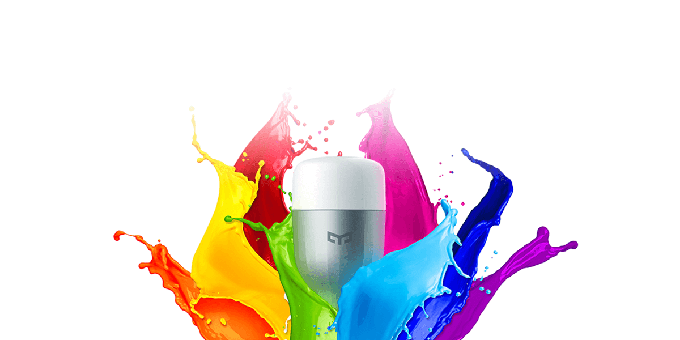
-
Technology – Unlike bulbs like Philips Hue that require a bridge in order to connect to your network, the Xiaomi Yeelight and LIFX will hook into your WiFi directly with support for 2.4GHz 802.11b/g/n connections. The lack of additional equipment is great, as you can just pick up the bulbs, screw them in, and you’re ready to go!
-
Away from Home Control – Whether you’re at home or away, you’ll have full control of your bulbs through the smartphone app for Android, iOS, or Windows.
-
16 Million Colors – Choose a new color multiple times a day for the rest of your life without ever repeating, with the ability to shine over 16 million colors.
-
Dimming – While having a bright light is great, sometimes it’s nice to be able to bring the levels down for better ambiance and relaxation. Whether you’re hosting a dinner party with friends, or even if you’re just winding down for bed, it’s nice to have the ability to adjust color temperatures and brightness levels with both the Xiaomi Yeelight and LIFX.
-
Scheduling – You can turn your bulbs on and off through your smartphone app or on a switch, but what if you didn’t have to? Using schedules, you can set your bulbs to turn on when you’re at home and off when you head out to work. Plan your lighting around your day to ensure that you’re not wasting energy and that you’re never left in the dark.
-
Music Syncing – Music Syncing comes standard on both bulbs, which is great for adding a little extra fun to a house party. You can choose from a wide range of effects, or even use your phone’s microphone to change the lights and intensity to match the vibes of your music.
-
Geofencing & IFTTT – While having schedules on your phone is great, most of us aren’t entirely predictable when it comes to entering and leaving the house. One way to address this is through Geofencing, and that feature can be enabled through integration with IFTTT.
IFTTT is a conditional trigger system that allows you to connect your various smart devices, and you can set it up to automatically turn the lights on or off as your device connects to or leaves your WiFi network. It’s not the perfect solution, but with most of us having phones that can remember our home network and bring us online as we walk in the door, it works pretty well in practice.
There are, however, some brands that include geofencing by default. Check out the Philips Hue if you’d rather not mess with IFTTT.
-
LED Life-Span – Based on a usage of 3 hours per day, the bulbs from both brands should last around 22.8 years. Chances are that the majority of us use our lights for a good amount longer than that, but you should still get multiple years out of a single bulb even with pretty heavy use.
Xiaomi Yeelight vs. LIFX — Accessories
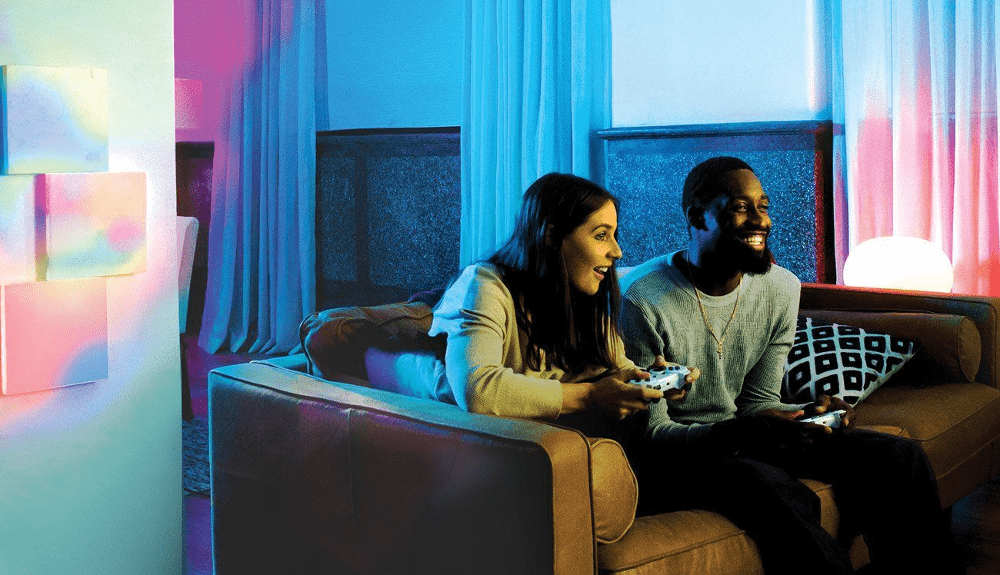
As far as accessories go, we’d recommend building out your home with some extra smart products from the same brand.
For the Xiaomi Yeelight, our top pick would be the Yeelight Candela or Yeelight sensor.
LIFX’s lineup is a little bit more robust and you have a lot of cool products to choose from. Our personal favorites are the LIFX light strip, LIFX Mini, LIFX Beam, and LIFX Tile.
Since both of these brands’ smart products all tend to work with the same central app, you should feel free to mix and match things with the knowledge that it should all work well together.
Xiaomi Yeelight vs. LIFX — Our Thoughts
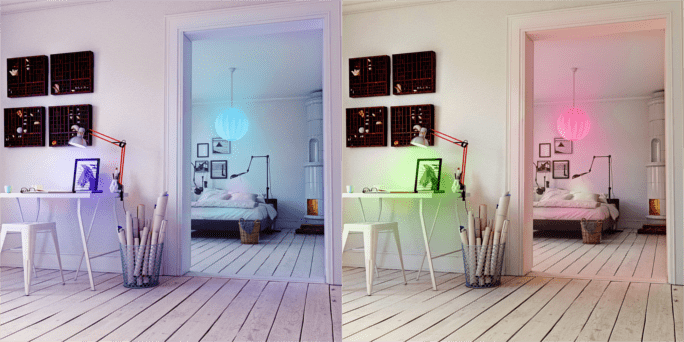
Ultimately, the winner when comparing the LIFX vs. Xiaomi Yeelight is quite clear. Xiaomi may offer more affordable prices, but LIFX’s extra features like a brighter bulb, smart home integration with Apple HomeKit, and control via Cortana, are just too good to pass up.
If you’re not interested in those features, than Yeelight is a good choice. For budget buyers, it’s certainly quite attractive. If you can find the LIFX on sale, however, we see no real reason to opt for Xiaomi over the premium quality that LIFX has to offer.
Last update on 2024-04-19 at 09:07 / Affiliate links / Images from Amazon Product Advertising API
